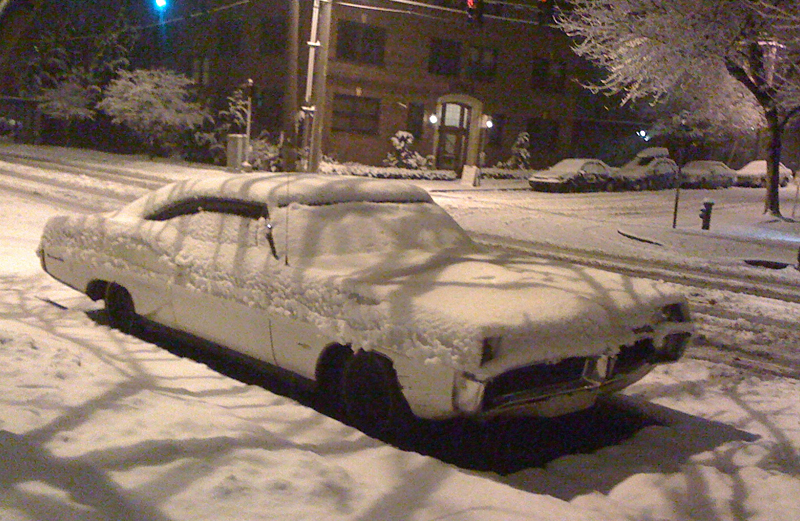When did the idea of art cars emerge from the old hot-rod culture of the ’50s and ’60s? And should we blame Tom Wolfe for his Kandy- Kolored Tangerine-Flake Streamline Baby? At a certain point, conceptualists began to make use of vintage Detroit steel (e.g., the Cadillac Ranch in Amarillo, Texas), then the arts-and-crafts crowd began assailing their own vehicles with glue guns and bowling trophies. The Fremont Fair offers an annual survey of such rolling whimsy, but I prefer the purism of those car owners who leave their unadorned oddballs to rust on the street. Art cars, whether covered with AstroTurf or pennies, seem like kitsch. But a plain old Pontiac Bonneville, circa 1967, is more impressive for its latent historical integrity. It’s a hulk that defies decoration, with a bulk that shrugs off slow metal oxidation in the uncaring elements. In my neighborhood, this dreadnought from the V-8 era of pre-EPA profligacy has been haunting the curb for months. It takes at least two normal car-lengths to park—a feat of performance art in itself—and never seems to move more than a block to avoid the notoriously strict LQA meter maids. On a snowy insomniac walk a few months back, I found it slumbering beneath its white blanket, dreaming of unleaded gas, pliant Arab dictators, and full-service Texaco stations. Half camouflaged by the slush, it lurks like a frozen dinosaur, an ivory-colored beast from the walls of Lascaux.
The Fussy Eye: Park and Hide








